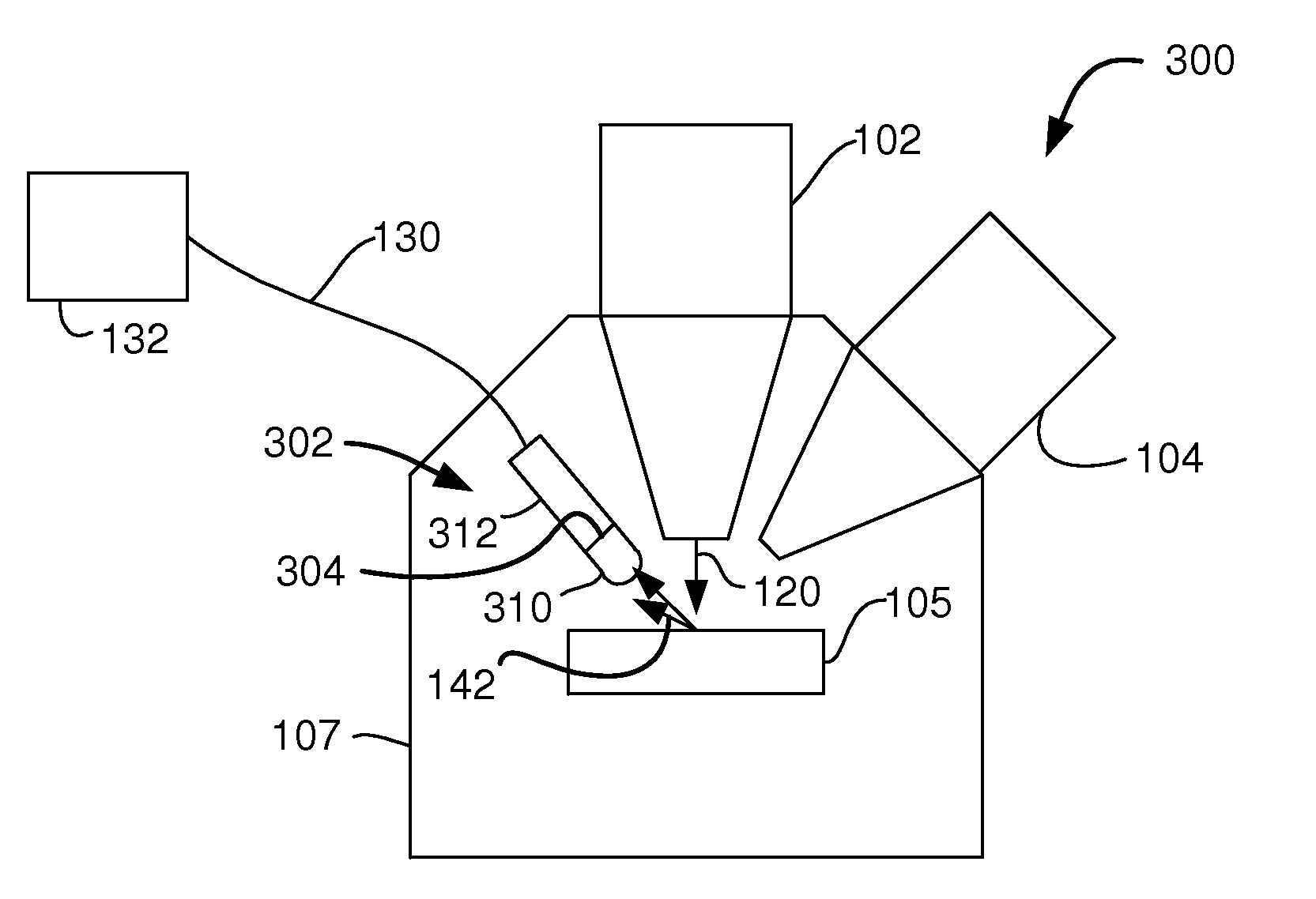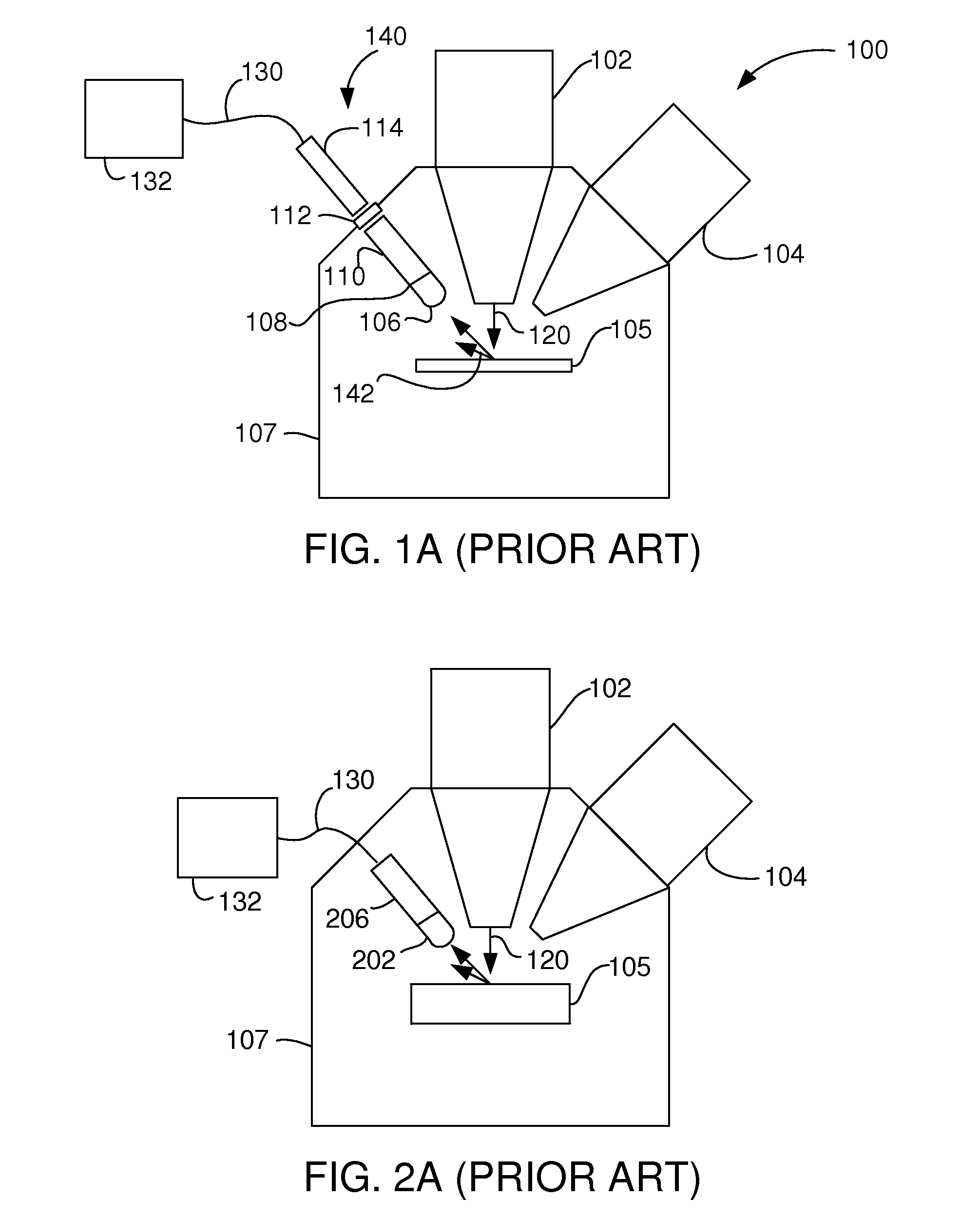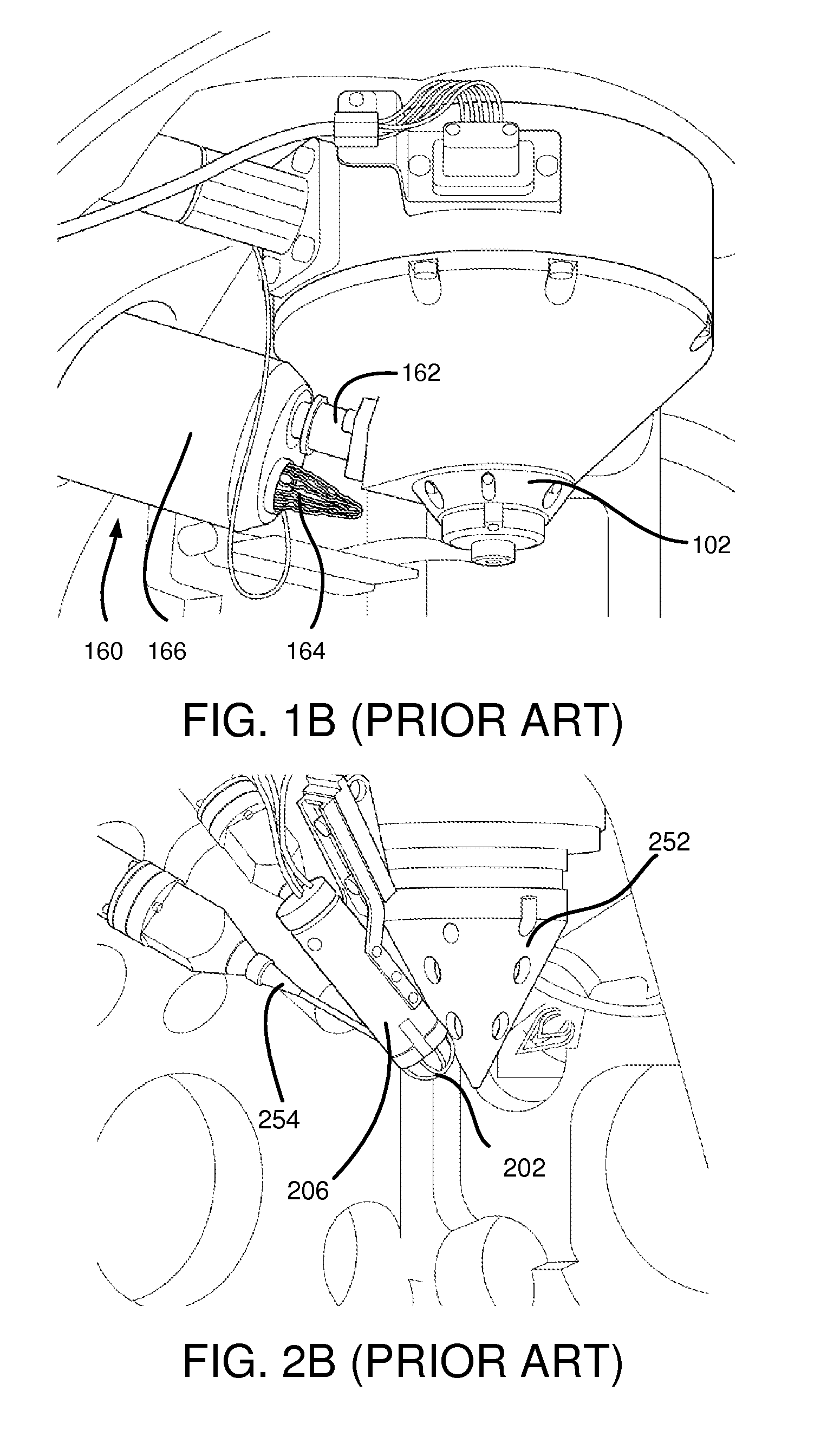In-chamber electron detector
a detector and chamber technology, applied in the field of particle detectors, can solve the problems of significant light loss, limited flexibility of dual beam system users, and loss of light, and achieve the effect of eliminating a source of signal loss and strong secondary electron signal
- Summary
- Abstract
- Description
- Claims
- Application Information
AI Technical Summary
Benefits of technology
Problems solved by technology
Method used
Image
Examples
Embodiment Construction
[0036]FIG. 3 shows a dual beam system 300 using an in-chamber ET (ICE) detector 302. Detector 302 includes a scintillator 304, typically of a phosphor material, and a transducer such as a compact photomultiplier tube 312, and a conductive grid 310 for attracting charged particles. A suitable compact photomultiplier tube is available, for example, from Hamamatsu Photonic KK, Shizuoka-ken, Japan. The photomultiplier tube is preferably less than 115 mm long, more preferably less than 75 mm, and even more preferably less than 55 mm long, and most preferably less than or about 30 mm long. An electrical lead 130 conducts the output of PM tube 312 to imaging circuitry 132 outside of the vacuum chamber 107. Because the PM tube 312 is within the vacuum chamber, no light tube is required to lead the light to a PM located positioned outside of the vacuum chamber.
[0037]It is noted that instead of a PM tube, other types of photon-to-current converters can be used, such as photodiodes or phototra...
PUM
 Login to View More
Login to View More Abstract
Description
Claims
Application Information
 Login to View More
Login to View More - R&D
- Intellectual Property
- Life Sciences
- Materials
- Tech Scout
- Unparalleled Data Quality
- Higher Quality Content
- 60% Fewer Hallucinations
Browse by: Latest US Patents, China's latest patents, Technical Efficacy Thesaurus, Application Domain, Technology Topic, Popular Technical Reports.
© 2025 PatSnap. All rights reserved.Legal|Privacy policy|Modern Slavery Act Transparency Statement|Sitemap|About US| Contact US: help@patsnap.com



